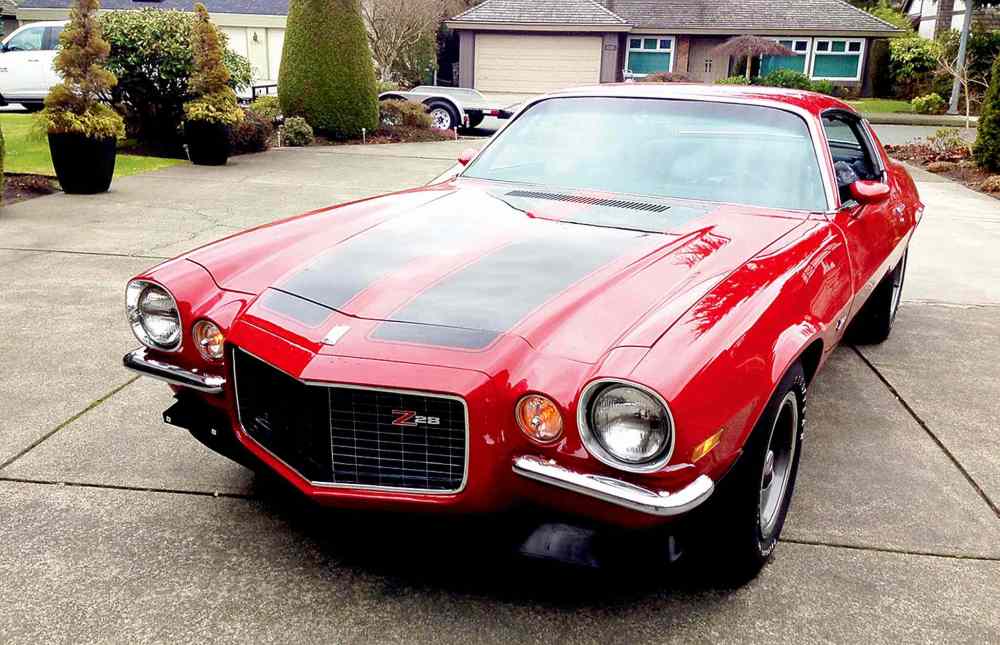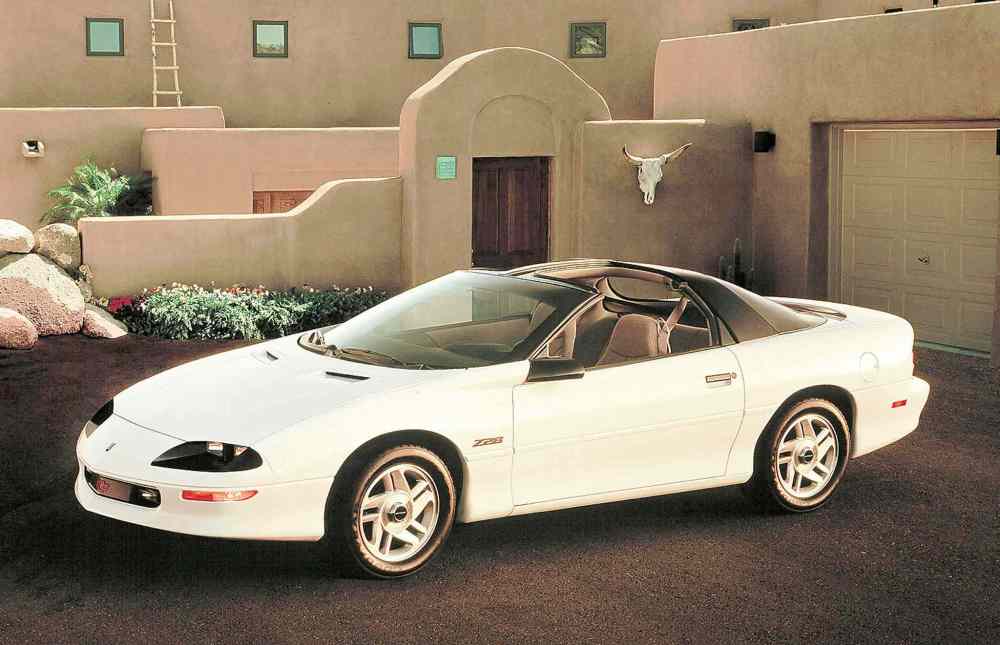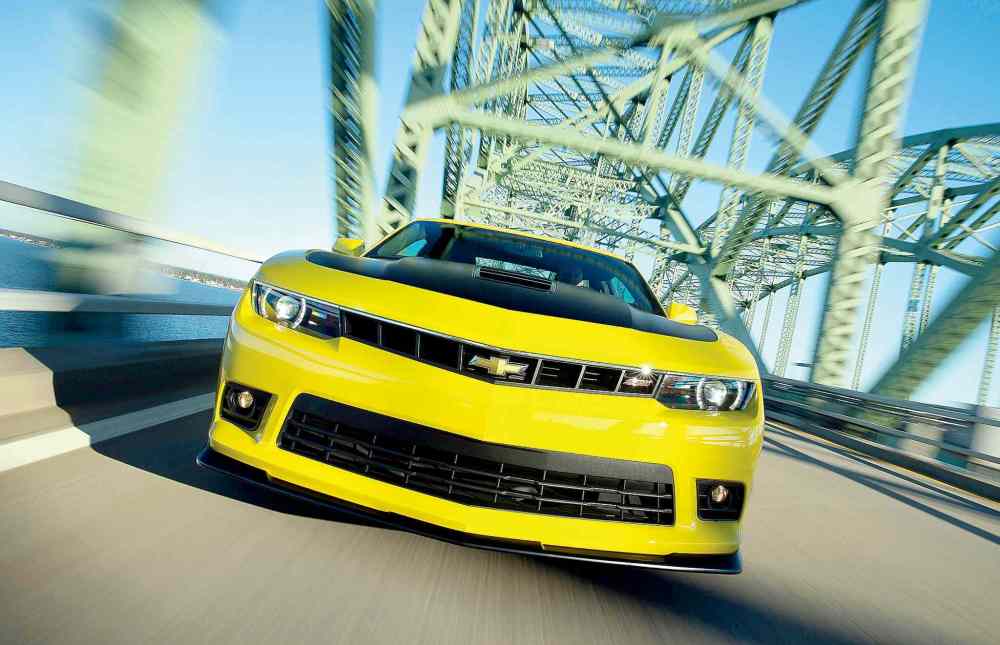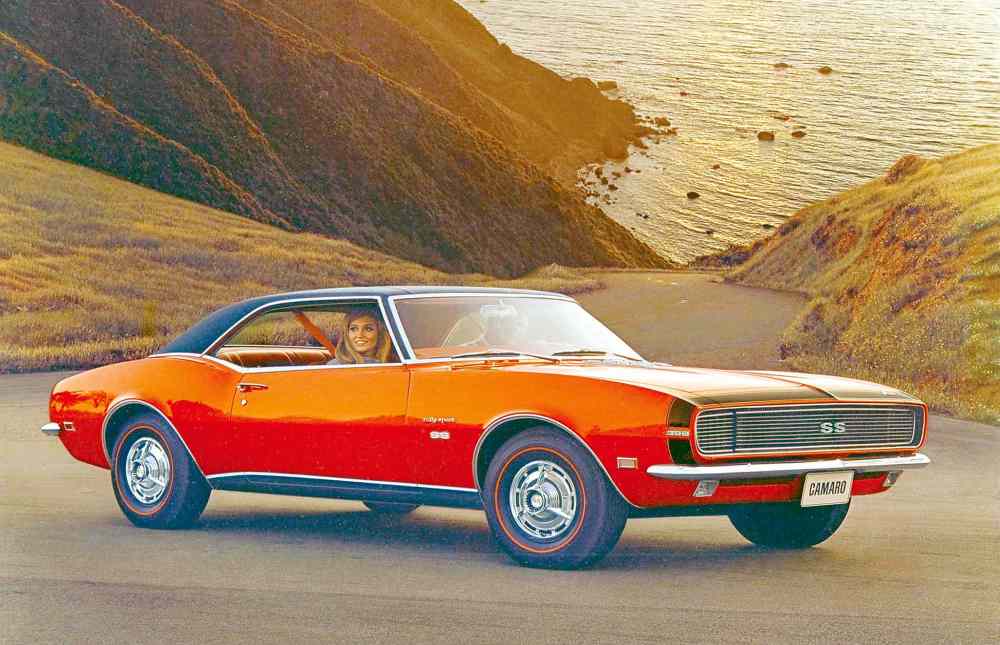Celebrating five generations of the Camaro
With an all-new version on the horizon, we take a look back at the history of an American icon
Advertisement
Read this article for free:
or
Already have an account? Log in here »
To continue reading, please subscribe:
Monthly Digital Subscription
$1 per week for 24 weeks*
- Enjoy unlimited reading on winnipegfreepress.com
- Read the E-Edition, our digital replica newspaper
- Access News Break, our award-winning app
- Play interactive puzzles
*Billed as $4.00 plus GST every four weeks. After 24 weeks, price increases to the regular rate of $19.00 plus GST every four weeks. Offer available to new and qualified returning subscribers only. Cancel any time.
Monthly Digital Subscription
$4.75/week*
- Enjoy unlimited reading on winnipegfreepress.com
- Read the E-Edition, our digital replica newspaper
- Access News Break, our award-winning app
- Play interactive puzzles
*Billed as $19 plus GST every four weeks. Cancel any time.
To continue reading, please subscribe:
Add Free Press access to your Brandon Sun subscription for only an additional
$1 for the first 4 weeks*
*Your next subscription payment will increase by $1.00 and you will be charged $16.99 plus GST for four weeks. After four weeks, your payment will increase to $23.99 plus GST every four weeks.
Read unlimited articles for free today:
or
Already have an account? Log in here »
Hey there, time traveller!
This article was published 22/05/2015 (3803 days ago), so information in it may no longer be current.
It may have started out as General Motors’ hasty response to Ford’s wildly successful Mustang, but since its debut in the late 1960s, Chevrolet’s Camaro 2+2 sports coupe has become a piece of motoring Americana four decades later. As a crucial part of the holy trinity of American muscle cars (Mustang, Challenger, Camaro), the Chevy has the icon status that few cars can achieve.
In anticipation of an all-new 2016 Camaro arriving this spring, we’re taking a look at the history behind the five previous generations of Chevrolet’s legendary sports coupe.

First generation: 1967 to 1969
Although Chevrolet was already selling its import-inspired, rear-engine, 2+2 Corvair Monza coupe, after watching arch nemesis Ford sell more than 600,000 Mustangs in 1964, parent GM could not sit idly by.
Just as the 2+2 Mustang used a plebeian, front-engine/rear-drive Ford Falcon economy-car chassis, the 2+2 Camaro — along with its Pontiac Firebird sibling — was quickly developed using the front-engine/rear-drive Chevrolet Nova platform. And like the Mustang, the Camaro came as a two-door hard-top or convertible, with six- or eight-cylinder gas engines.
To compete against the high-performance Shelby Mustangs in the Sports Car Club of America’s Trans Am racing series, Chevrolet started offering the now-famous RPO (Regular Production Option) Z/28 package in late 1967, highlighted by a 290-horsepower (unofficially, more like 360) small-block 302 cubic-inch V-8.
Although the original pony car — the Mustang — still outsold the upstart Chevy four to one, almost 100,000 1967 Camaros were sold in its first year.
Generational highlight: The 1969 Camaro Z/28 — with its race-prepped V-8, Muncie four-speed box and standard Hurst shifter — was a street-legal race car anyone could own.
Generational lowlight: Any first-gen Camaro with six cylinders, three-speed automatic and a vinyl roof — why bother!
Second generation: 1970 to 1981
With development problems and a worker strike at GM delaying its production by half a model year until February 1970, the second-gen Camaro did not get off to an auspicious start. It ended up, though, as one of the longest running and most popular Camaros ever.
The Camaro convertible was no longer. And like all cars of the Oil Crisis era, the Chevy’s performance quickly deteriorated as tighter fuel economy and tailpipe emissions standards strangled V-8s. Horsepower peaked in the 19701/2 models at 375 hp, bottoming out with a woeful 155 hp in the once-mighty 350 cu. in. V-8 in 1975.

Despite losing some of its first-gen muscle, the new Camaro improved in the looks department. Shamelessly inspired by the 1963 Ferrari 250 GT Lusso, the longer, lower and wider 19701/2 Camaro was arguably one of the most beautiful American cars on the road. As well, Chevy spent more time and money improving the sports coupe’s overall ride and handling.
By the mid-1970s, Ford’s Pinto-based Mustang II (that could be had with a relatively fuel-efficient four-cylinder) was still the segment’s sales leader. But with the demise of rivals, including the AMC Javelin, Dodge Challenger, and Plymouth Barracuda, the second-generation Camaro (and its Firebird twin) had the traditional sports coupe buyer all to itself, with sales of the Chevy 2+2 historically peaking in 1979 with more than 280,000 sold.
Generational highlight: With its Chevrolet Corvette-sourced 360-hp V-8 and more sophisticated road manners, the 1970? Camaro Z/28 was one of America’s best road cars.
Generational lowlight: The baroquely styled 1979 Berlinetta was Chevrolet’s attempt to create a “personal luxury” Camaro.
Third generation: 1982 to 1992
By the early 1980s, the Chevy sports coupe’s 1960s roots were showing. While the Camaro continued to play the same rear-drive song, many buyers were happier listening to the front-drive sports coupe playlist, from the likes of the Honda Prelude.
But one item many import coupes lacked was an affordable V-8. So after a decade of dealing with smog controls, American automakers started figuring out how to pack more oomph into their V-8 engines, renewing a horsepower war that continues today.
In 1982, Ford reintroduced the 5.0-litre V-8 to its Mustang. A year later, the 1983 Camaro Z28 (the slash now gone) sported a new, High Output 5.0-L V-8 as well, making 190 hp and beating the 1983 Mustang V-8 by 15 hp. By the end of the 1980s, both American sports coupes were delivering well over 200 hp.
The 1980s also saw the return of true open-air motoring in a Camaro. Replacing leaky and rattle-prone T-tops, 1987 saw the revival of a convertible Camaro, last seen in 1969.

Generational highlight: The 1990 to 1992 Camaro IROC (International Race of Champions) Zs came with a 245-hp 5.7-L V-8, the most powerful Camaro since the early 1970s.
Generational lowlight: Our vote for The Worst Camaro Ever: the 1982 Camaro Sport Coupe came with GM’s notorious Iron Duke, a four-cylinder that coughed up around 90 hp, and made for a 20-second zero-to-60 mph time.
Fourth generation: 1993 to 2002
The fourth (and what we thought would be the final) generation of Camaro stuck to the same formula as the 1967 original. In fact, the “new” 1993 model was a heavily updated version of the Camaro from the previous decade, still built on GM’s F-body rear-drive platform from the 1960s.
Thankfully, the four-cylinder Camaro was axed. Base model V6s grew from 160 hp to 200 hp by the end of this generation. And just as Ford kept on bumping up the horsepower in its Mustangs, top end V-8 Camaros went from 275 hp in 1993 to 330 hp by 2002.
Despite the improvements, former sports-coupe buyers were now getting into SUVs and trucks and 2001 was the lowest production year ever for Camaro, with just over 29,000 sold. The next year, GM pulled the plug on both the Chevy Camaro and the Pontiac Firebird sports coupes.
Generational highlight: The 1997 limited edition 30th Anniversary Camaro SS sported a 330-hp V-8 and claimed to be the fastest Camaro ever.
Generational lowlight: If you’re looking for the lamest third-gen Camaro, try the 160-hp 1993 and 1994 six-cylinder models.
Fifth generation: 2010 to 2015
It was like deja vous: it took a wildly popular Ford Mustang to get Chevrolet to relaunch the Camaro.

With the American sports coupe market to itself, the retro-styled 2005 Ford Mustang was a sales smash. And just as they did in the 1960s, Chrysler and GM responded with the Dodge Challenger and Chevrolet Camaro concepts in 2006.
Targeting a 2010 launch date, but without a rear-drive car platform in its portfolio, Chevrolet turned to Australia and created a two-door coupe based on a GM Holden sedan platform, with retro-styling inspired by the 1969 Camaro.
Originally, base 2010 Camaros sported a 304-hp V6, while topline SS models employed a 400-hp to 426-hp V-8, bettering any Camaro from the pre-Oil Crisis muscle-car era. A two-door hard-top was launched initially, and a Camaro convertible returned for 2011. In 2012, the low-volume, 580-hp Camaro ZL1 muscle car arrived.
Generational highlight: The return of the Z/28 in 2014, a true sports car that could take on the Mustang Boss 302 as well as the BMW M3.
Generational lowlight: This generation of Camaro is arguably the best so far. But if we must, a Camaro without a V-8 just doesn’t seem right.
–Postmedia Network Inc. 2015

